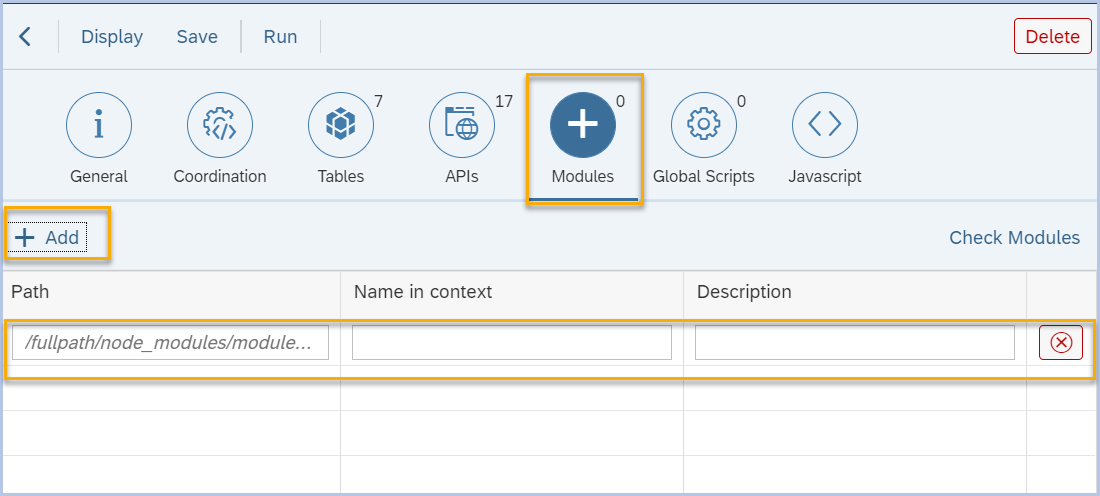

- #NPM INSTALL MODULES HOW TO#
- #NPM INSTALL MODULES UPDATE#
- #NPM INSTALL MODULES SOFTWARE#
- #NPM INSTALL MODULES LICENSE#
- #NPM INSTALL MODULES DOWNLOAD#
This can lead to a situation where module A requires v1 of module C and module B requires v2 of module C. Sometimes different packages require different versions of the same module. What's this tree you ask? Remember that npm install downloads a package and any dependencies it relies on. This makes it easier for subsequent installs to use the exact same tree (regardless of intermediate dependency updates). This file describes the exact dependency tree that was installed. Npm install also generates a package-lock.json file. The downloaded modules are placed in a node_modules folder in the same location as package.json.

It's important that npm install is run in the same directory as the package.json file. Running npm install without arguments installs modules defined in the dependencies section of the package.json file. npm install (no arguments) npm install npm iīoth of these commands do the same thing. Let's look at some examples in more detail. It's important that npm install is run in the same location as the package.json file. The package.json file dictates what modules will get installed in the node_modules folder. When run with arguments, npm install downloads specific modules to the node_modules folder. When run without arguments, npm install downloads dependencies defined in a package.json file and generates a node_modules folder with the installed modules. Npm install can be run with or without arguments. The NPM framework gives access to many different JavaScript solutions, which can be found at install downloads a package and it's dependencies. You’ve also written your first node.js JavaScript program! You should now be able to install both the Node.js framework, and the NPM package manager. You can close this window whenever you are ready. The system will switch back to a command prompt. To turn off the program, switch back to PowerShell and press Ctrl+C. Any other computer that tries to access your system on port 8080 will see the Hello World notice. Right now, your computer is acting like a server. Next, open a web browser, and enter the following into the address bar: In the very upper-left corner, you should see the text Hello World! You may see a Windows Defender notice about allowing traffic – for now, click Allow.Ĥ. In reality, your script is running in the background.

Open the PowerShell, and enter the following: node \users\\myprogram.js Next, copy and paste the following into the text editor you’ve just opened: var http = require('http') Start by launching a text editor of your choice.Ģ. To test your new Node.js installation, create a Hello World script.ġ. Instead, it interprets commands that you write. Node.js is a framework, which means that it doesn’t work as a normal application. This launches a wizard to uninstall the software.
#NPM INSTALL MODULES HOW TO#
How to Uninstall Node.js and NPM on Windows The setup wizard will overwrite the old version, and replace it with the new version.
#NPM INSTALL MODULES DOWNLOAD#
To upgrade, download the installer and run it. You can compare this to the version you have installed. On the Node.js download page, right below the Windows Installer link, it will display the latest version.
#NPM INSTALL MODULES UPDATE#
The easiest way to update Node.js and NPM is to download the latest version of the software. The system should display the Node.js version installed on your system. Open a command prompt (or PowerShell), and enter the following: node -v Finally, click the Install button to run the installer. Again, unless you have a specific need, accept the defaults by clicking Next.ħ. The wizard will let you select components to include or remove from the installation. Leave the default location, unless you have a specific need to install it somewhere else – then click Next.Ħ. The installer will prompt you for the installation location. Click Next if you agree to the terms and install the software.ĥ.
#NPM INSTALL MODULES LICENSE#
On the next screen, review the license agreement. You will be welcomed to the Node.js Setup Wizard – click Next.Ĥ.
#NPM INSTALL MODULES SOFTWARE#
The system will ask if you want to run the software – click Run.ģ. Or, browse to the location where you have saved the file and double-click it to launch.Ģ. Open the downloads link in your browser and click the file. Once the installer finishes downloading, launch it. Step 2: Install Node.js and NPM from Browserġ. If you are new to Node.js or don’t need a specific version, choose LTS. You can also use the top link to switch from the stable LTS version to the current version. If you have an older system, you may need the 32-bit version. Note: There are other versions available.


 0 kommentar(er)
0 kommentar(er)
